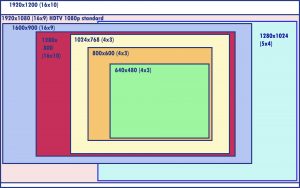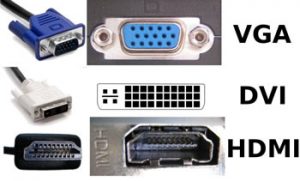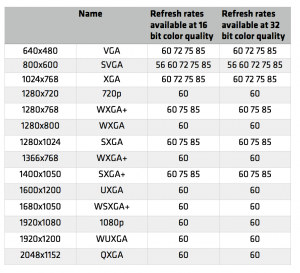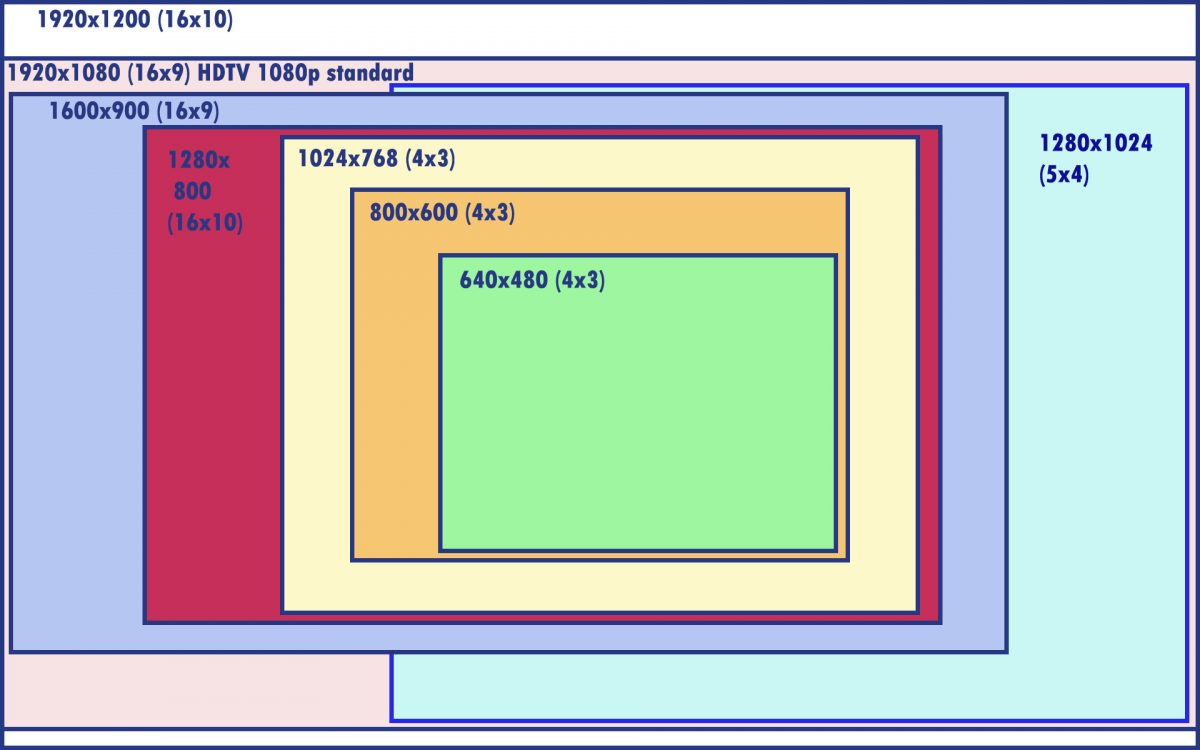Display resolution explained
What is meant by screen resolution?
Very simply stated, an image or picture on a display screen is made up of a number of dots called pixels. These pixels run left to right (horizontal) and top to bottom (vertical). The more pixels on a screen, the higher the definition of the image. For example, where a TV screen with a resolution of 640 pixels by 480 pixels (640 x 480) displays a picture of a flower, that picture would look a little pixelated or “fuzzy” when compared to another screen of the same physical size but having a resolution of 1920 x 1080 displaying the same flower. The second screen, even though it is of the same physical size, has more dots making up its image, and thus, the image looks much better or is said to be of a better definition.
The chart below shows the relationship between screen resolution and aspect ratio in a simple to understand manner.

But what do all the fancy terms and numbers mean?
Aspect ratio – This describes the shape of the image. It is the ratio between the width and the height of the image. The two common aspect ratios are 4:3 commonly referred to as “letterbox” and 16:9 referred to as “wide-screen”. The 4:3 image looks more square when compared to the 16:9 image which is rectangular.
Full HD – Full high-definition refers to a HDTV (high-definition TV) mode characterised by 1920 x 1080 pixels. This is different from 720p HD which is characterised by 1280 x 720 pixels.
VGA – Or video graphics array was a popular display standard introduced in 1987 by IBM. It had a resolution of 640 x 480 pixels. VGA was later replaced by SVGA which stood for super graphics array and was characterised by a resolution of 800 x 600 pixels and later extended to the very popular 1024 x 768 resolution while keeping the same D-sub connector.
DVI – Or digital visual interface is an interface, characterised by a rectangular connector, designed to transmit uncompressed digital video information between a source and display. DVI supports multiple modes – DVI-A (analog), DVI-D (digital) and DVI-I (integrated) which is a combination of digital and analog. The DVI specification is compatible with the VGA interface. Although DVI is primarily associated with computers, it is also used in consumer displays and DVD players.
HDMI – Or high-definition multimedia interface is an interface used to transmit both uncompressed digital video and audio over a single interface, from a source to a display device.

The table below is a quick reference guide to the different resolutions and terminology:

Contact Control Room and AV Solutions for all your visualisation solutions, from single display digital signage to mission critical video wall and CMS solutions.
Authored by Yusuf R Shaik – Control Room and AV Solutions

